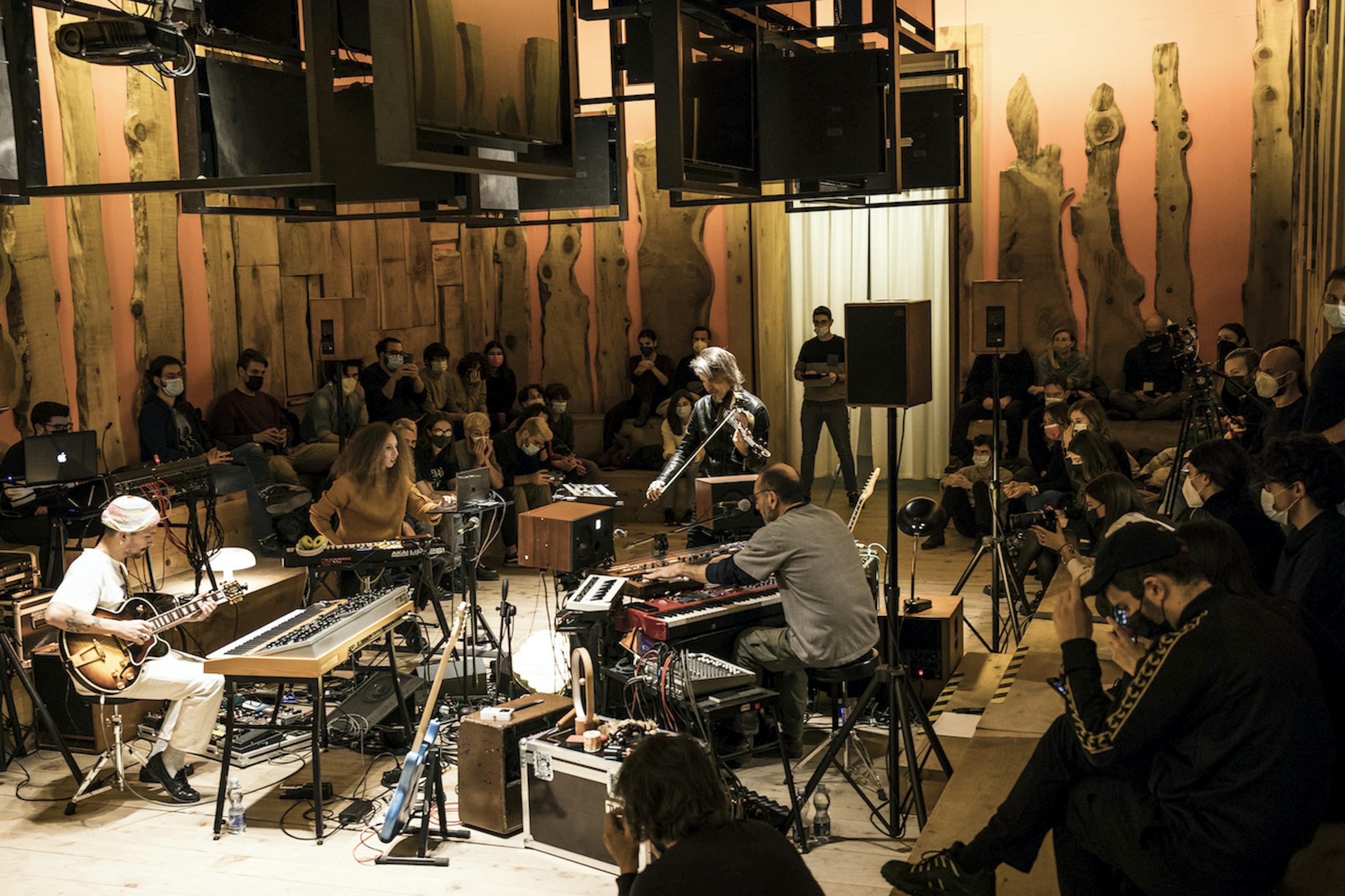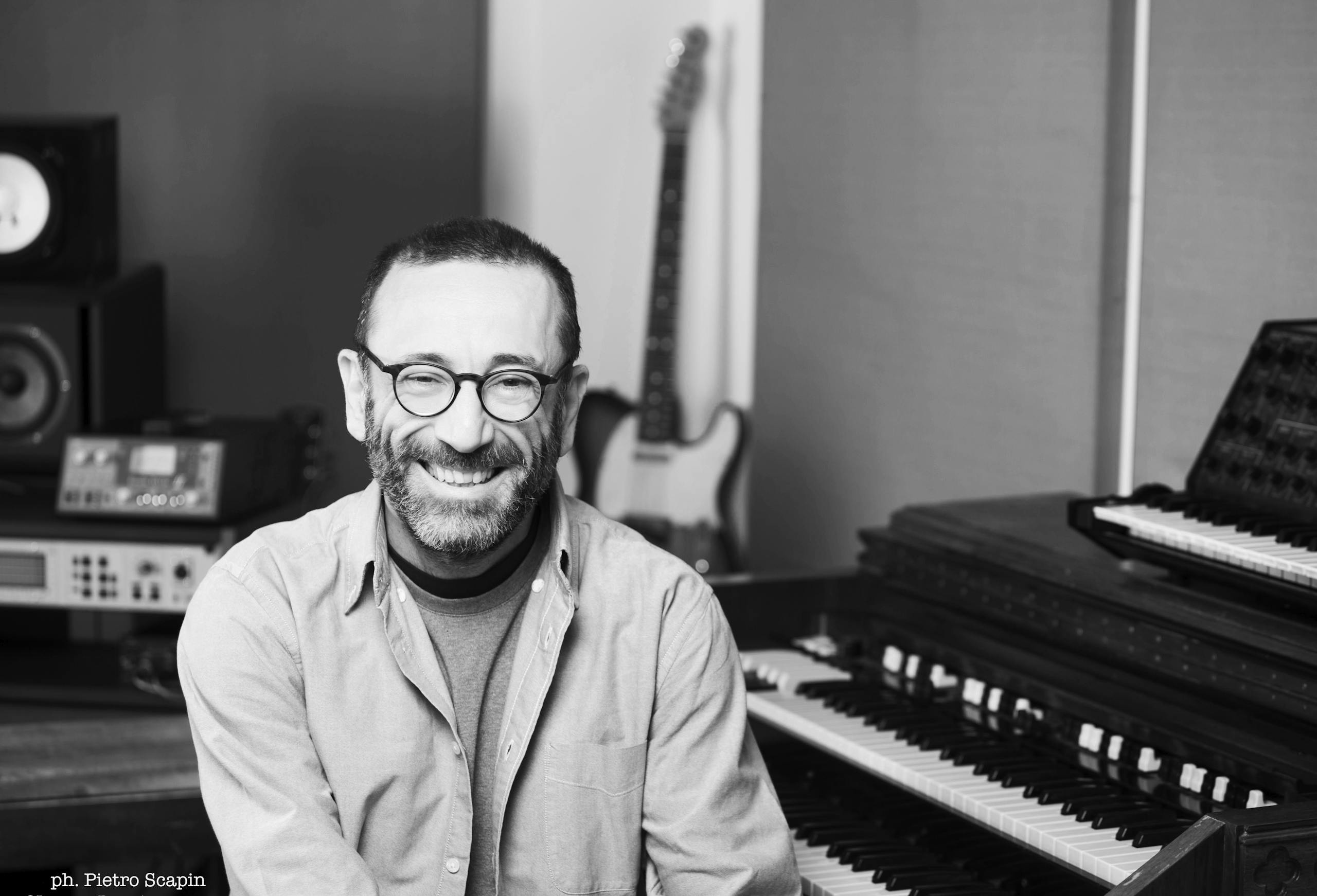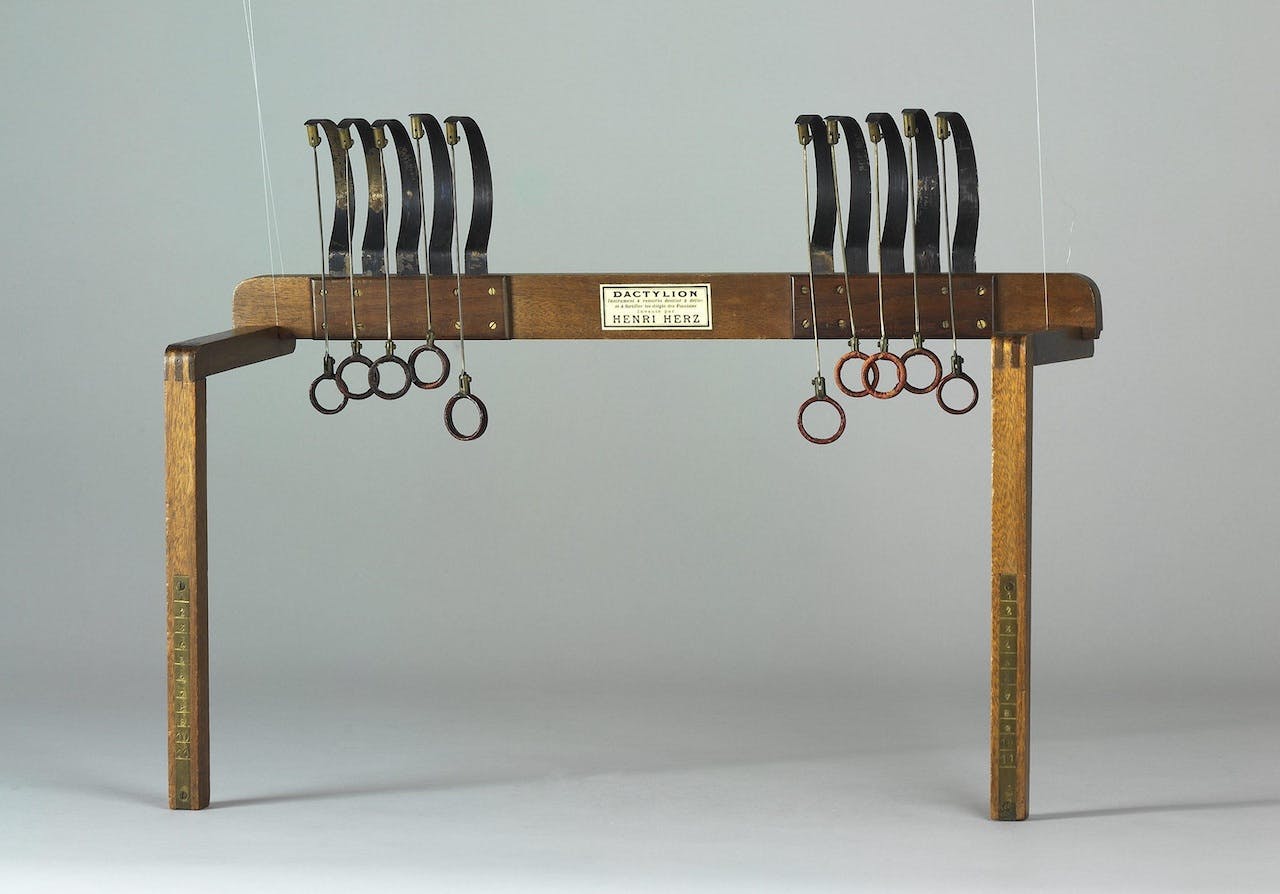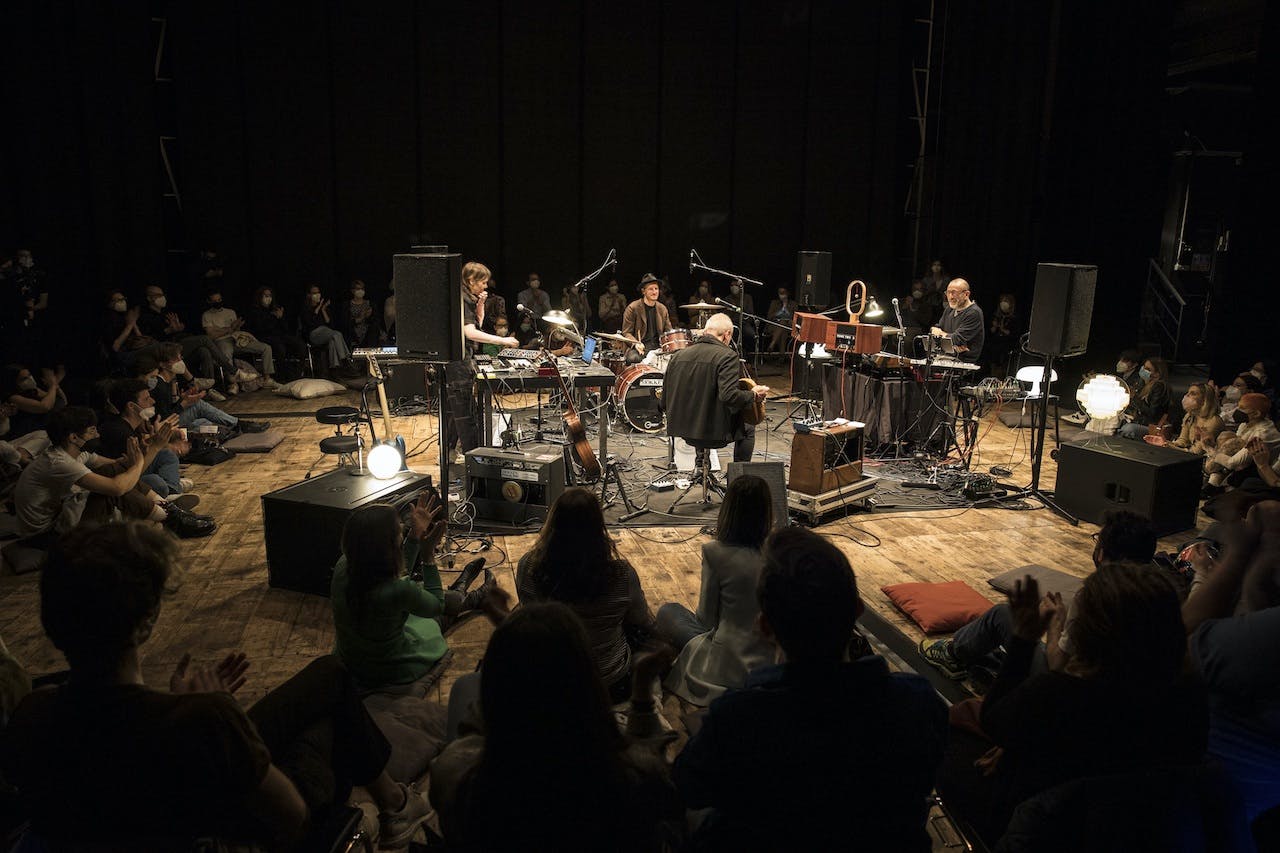
Open Machine
Vittorio Cosma
The Goodness Factory
SOLD OUT

© Pietro Scapin
Those who, like me, come from the world of music that we usually refer to as classical will be familiar with the many anecdotes about the physical athleticism of certain performers: one example is the legend about the sixteen consecutive hours of practice by pianist Arturo Benedetti Michelangeli. Or the story of the composer Robert Schumann who, in an attempt to increase the flexibility of his fingers with a steampunk-style mechanical device, permanently injured his right hand, nipping his career as an instrumentalist in the bud.
Bodies at the service of music
Whether or not these stories are true, and in fact considering them to be at least partly myth, it is interesting how certain anecdotes cannot fail to mention a body which, in order to achieve an excellent aesthetic result, is subjected to extremely hard training based on renunciation or discipline. This sublime and tragic approach to music is not the only one possible: to demonstrate this I will use – as a counter-example – the performance Open Machine directed by Vittorio Cosma for Triennale Milano (during the fifth FOG festival) on 6 May 2022 at Il Lazzaretto.

A global musician
Cosma made his mark on the Italian music scene as a member of PFM, before going on to collaborate with numerous organizations suspended between the various layers of culture: from Elio e le Storie Tese to the Sanremo Festival, from soundtracks for independent Italian cinema to cross-disciplinary productions of total works of art (Indeepandance).The Open Machine project is just one of his latest endeavours, of which several replicas have already been presented within the Triennale programme. To be honest, it is improper to talk about replication: Open Machine’s performances cannot take place twice in the same way because they are improvised happenings, in which the musicians do not predetermine what and how they will play together and the audience is involved in the construction of the musical edifice.
For the sake of simplicity
The concept of free improvisation, born after the Second World War within the context of jazz and avant-garde classical music, can evoke the idea of something that is difficult to listen to and complex, as demonstrated by many of the improvisations by the historic group Nuova Consonanza. However, this is not the road our Cosma seems to have wanted to take, at least judging by Botanica, the performance he gave with Deproducers at the Global Seed Vault, which may give us an idea of the ones he directed for the Triennale. The piece by Deproducers is an excellent example of musical minimalism: on a more or less stable harmonic carpet, the musicians converse with short semi-phrases, in an atmosphere in which listening and coordination become more important than discursive propositionality. Respect for the logic of dialogue and the gradualness of change are the factors that allow us, when listening to a piece such as Botanica, to adapt gradually and to follow the musical flow effortlessly.
Deproducers – Botanica – The Global Seed Vault Performance
Beyond prescription
I was talking at the beginning about athletic and disciplined bodies, put at the service of the task they have to perform. The main characteristic of improvisation in the dark is precisely that of eliminating the embodied reference of the musical work, understood both as a written score or project and as a system of expectations, fears and inhibitions. Stephen Nachmanovitch calls these psychological elements of self-censorship “judging spectres”. When musicians are deprived of external references, they are forced to make a huge effort in terms of their presence, aimed at harmonizing an external dimension, namely the music, with its evolving structural needs and with their own internal imagination, which is attached to the intuition of possible developments of the musical creature and is linked to desire. The difficulty of this mediation is accentuated by the judging spectres, the internal voices that evaluate what we are constantly doing and compare us with introjected models. However, during an improvisation there is no time to listen to the prescriptions and criticisms of these spectres, and one is therefore forced to free oneself from them, achieving full coincidence with the continuity of the musical action.

Music at the service of bodies
There is another aspect of liberation in the practice of collective improvisation. While it is true that “when you start making music together ... you are all worth the same” (Vittorio Cosma, from a speech for TEDxVarese) and it is even possible to communicate with people from very different cultures, the asymmetry of instrumental skills can represent a significant “architectural barrier”. However, within the context of improvisation, each participant is responsible for proposing musical ideas that are accessible to the others, while, at the same time, it is sufficient to be able to clap to make a contribution. This gives rise to a double awareness: on the one hand that the relationship with others cannot be eradicated and, on the other, that there are no waste materials or disturbances. While, in the case of a normal concert, it is necessary to exclude the noises of everyday life, such as traffic or the voices of passers-by, during an improvisation these same noises can be used as the founding materials for building the music. So music ceases to look like Sisyphus’s boulder – a great burden to carry or a task to live up to – and becomes a flexible and welcoming collective ritual in which everyone is called upon to be no more than what they are.
Technical reproducibility and musical ecology
Lastly, free improvisation brings music back to its ephemeral dimension, to its being born to die: played music needs our action and our presence, it resists reproduction. This is not only a characteristic but a vocation, which explains why so many of the musicians who gave birth to the genre had a poor relationship with music recording techniques. For us today, improvisation can become a form of musical ecology, as long as we imagine the environment represented by the ensemble formed by the participants, the physical place where the performance takes place and the musical building as an ecological environment. As Timothy Morton has pointed out, an environment is said to be ecological when every element in it is simultaneously related to all the others, whether willingly or not. In this sense, the kind of musical action through which Vittorio Cosma and Open Machine will guide the audience is one of the few in which personalism and refusal to listen immediately reveal their negative effects, translating into imbalances and cacophonies – one of the few in which, if you don’t participate, you can be sure that the result will change.
Essential reading
D. Bailey, Improvisation. Its Nature and Practice in Music, Hachette Books, 1993
W. Benjamin, The Work of Art in the Age of Mechanical Reproduction, Penguin Publishing Group, 2008
T. Morton, Dark Ecology. For a Logic of Future Coexistence, Columbia University Press, 2018
S. Nachmanovitch, Free Play: Improvisation in Life and Art, Penguin Publishing Group, 1991